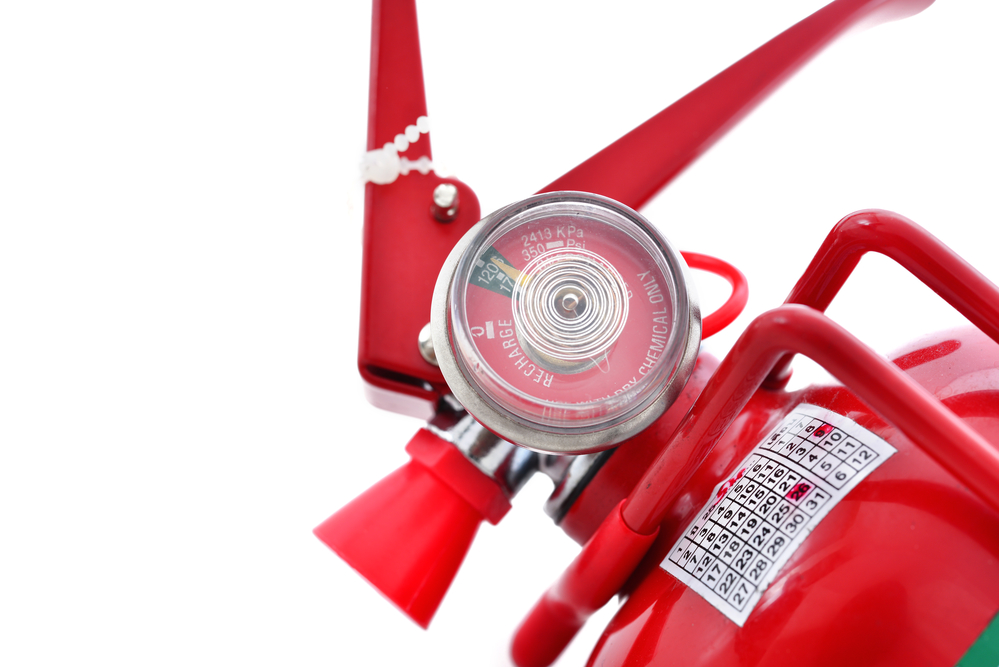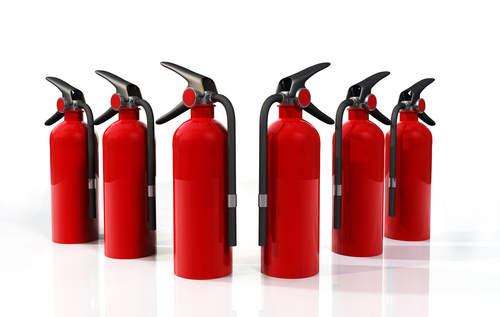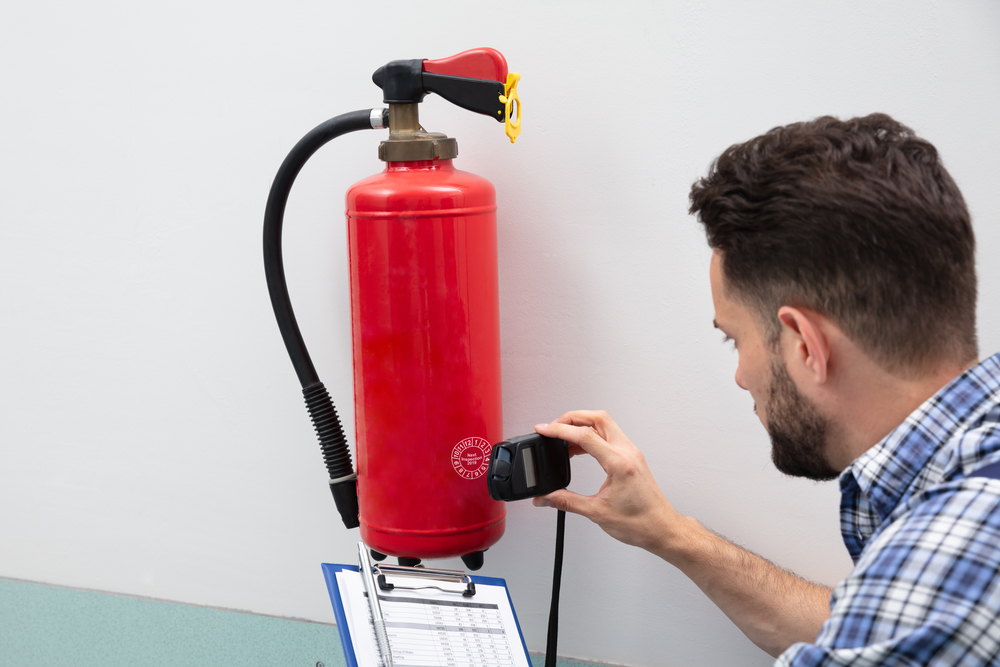
All About ABC Fire Extinguishers
Also referred to as “multipurpose” or “tri-class” fire extinguishers, ABC fire extinguishers are one popular type of fire protection device.
In today’s post, we’ll discuss some important and helpful information about ABC fire extinguishers. We’ll also share some practical tips about maintenance, repair, and inspection of fire extinguishers. We hope the information you find here today is helpful for you.
What Types of Fire Can ABC Fire Extinguishers Put Out?
To know what types of fire this type of fire extinguisher can kill, let’s first take a look at the different fire extinguisher symbols, their classifications, and the agents they use.
Class A Fire Extinguishers
This fire extinguisher type is used to deal with fires involving common combustible materials. These materials include paper, cloth, wood, rubber, plastics, and trash. Class A extinguishers use dry chemical agents, such as halotron, foam, and water.

Class B Fire Extinguishers
This type of extinguisher is used to combat fires coming from solvents, oil, lacquers, paints, gasoline, and other flammable and oil-based items. It uses ABC dry chemical, BC dry chemical, purple K, carbon dioxide, foam, and halotron agents.
Class C Fire Extinguishers
This type of extinguisher is used to kill fires stemming from electrical equipment such as appliances, wiring, motors, controls, and machinery. It uses ABC and BC dry chemicals, carbon dioxide, halotron, and purple K.
Class D Fire Extinguishers
This type of fire extinguisher is used to combat fires coming from flammable metals, including titanium, lithium, and magnesium. It uses a dry powder agent.
Class K Fire Extinguishers
This type of fire extinguisher is used to deal with combustible cooking materials such as grease, oils, and other related items found in restaurant kitchens or commercial kitchens. It applies a wet chemical agent.
Multipurpose Fire Extinguishers
ABC fire extinguishers are referred to as such because it can be used to combat fires classified under Class A (common combustible materials), Class B (flammable liquids), and Class C (electrically charged equipment).
There’s also the BC Fire Extinguishers – which can be used for fires under Class B and Class C. You’ll know what class a fire extinguisher is from the easily distinguishable label.
Versatility
ABC extinguishers are highly versatile. They are the prime choice for most property owners because they can put out many fire types. Monoammonium phosphate is used as a dry chemical agent to put out the fire efficiently. It’s a type of yellow powder used to put out combustible materials, flammable liquids, and electrical fire sources.
The powder ingredient found in ABC extinguishers can effectively smother the flames. However, since it’s in powder type, it leaves a residue whenever it’s used to put out a fire. Thus, it’s not suitable to use in data or server rooms or other areas with sensitive equipment or furniture. Keep this in mind when shopping for fire extinguishers.
Fire Extinguisher Maintenance
To properly maintain your fire extinguishers – whether it’s for commercial or residential use – it’s best to consult a professional. Since extinguishers are an essential fire protection device, you shouldn’t neglect to maintain them.
You don’t want to find yourself in a fire emergency where you can’t properly use a fire extinguisher – all because it wasn’t adequately maintained all this time.
Here are some steps you can take as a property owner to maintain your fire extinguishers.
Regular Visual Inspection

You should get into the habit of doing a visual inspection of all the extinguishers in your property at least once a month.
Check for any signs of damages, rusting, or leaks. Make sure all the safety seals are not tampered with.
Also, see if the hoses are not blocked. If you see any signs of breakage or damage, call your fire protection company right away.
Professional Inspection of ABC Fire Extinguishers
Employ the services of a professional and certified fire extinguisher company to do a thorough inspection of these devices.
What Are ABC Fire Extinguishers Used For?
Not all fires are similar. Thus, fire emergencies are classified according to what ignited them. Consequently, the technology in developing fire extinguishers stemmed from killing the type of fuel that caused the burning.
It’s essential to use the correct type of fire extinguisher in a fire emergency. If you fail to do so, you can likely make matters worse. To start, it’s essential to have a fundamental understanding of the main fire classifications.
To easily remember the different fire classifications, please read on.
Class A fires commonly leave ash when burning. These are paper products, plastics, trash, cloth, wood, and other combustible materials.
Class B fires stem from materials that bubble or boil when burning. These include grease, oil, gasoline, acetone, and other flammable liquids.
Class C fires are fires that come from the (electrical) current. Whatever is plugged in and requires electricity could start a Class C fire.
Class D fires are quite rare to occur in a typical setting. Unless you are in a specialized location such as a laboratory or you’re in a specialized industry, it’s not likely that you have to deal with a Class D fire. This fire classification stems from the burning of elements such as sodium, aluminum, magnesium, and potassium.
Special Rules When Using ABC Fire Extinguishers
The following essential guidelines can be broadly used when dealing with fires in general.
Fire emergencies can be hazardous. As such, it’s important to remember not to endanger yourself or other people when putting out a fire.
When you discover a fire, remember the following essential instructions.
Activate the fire alarm system of the facility. Ideally, the fire alarm system is monitored and should link you to the local fire department or appropriate first responder’s unit. The fire alarm should also send out a warning to all building occupants to evacuate. Fire alarm systems can also be set up to close all air handling features of the building to thwart the spread of fire.

Assist any person to safety if immediately needed. However, remember not to risk yourself when attempting to do this.
Before you start putting out a fire yourself, keep in mind the following:
Do you know what’s burning? If you don’t, then you wouldn’t know if you need foam, water, or ABC fire extinguishers.
Even if you have access to an ABC extinguisher, something in the fire may produce toxic burning or, worse, start an explosion. Chances are, you will have an idea of what’s burning. If you don’t, however, activate the fire alarm and let the fire department handle it.
If the fire is spreading quickly, the smartest thing you can do is to evacuate the building. Don’t even attempt to put it out. If possible, close all the windows and doors as you are leaving.
